As a restaurant owner, having a sales-oriented mindset is vital for running a successful establishment.
However, what some restaurateurs don’t realize is that your menu, if not thoughtfully designed and optimized, can inadvertently lead customers away from profitable choices and significantly impact your bottom line.
This article is here to step in as your guide to turning that around through menu engineering.
Through a blend of data-driven decision-making and strategic menu design, you’ll be equipped to steer your customers towards choices that both make them more satisfied and elevate your profits.
Get ready to revitalize your menu and boost your sales potential.
Choose a Time Frame for Menu Analysis
Alright, let's dive into the nitty-gritty of menu engineering. Choosing an appropriate time frame for menu analysis should always be your first step.
This practice is essential, as altering your menu during peak operations is like throwing a wrench into the works. It can confuse your staff and surprise your customers.
After all, your staff needs to be intimately familiar with your menu, while your customers might dislike a sudden change.
Instead, make sure to thoroughly plan any changes. This will allow for a smoother transition into the new menu.
Now, let’s consider the best options for when to conduct your menu analysis. Say you’re running an establishment like the cafe and bistro Xofa, where they change the menu seasonally.

Source: Xofa
In this case, analyzing your menu before the start of each season is a wise move.
Since your patrons will expect a menu change, this is a good opportunity to assess the performance of different items and make any necessary menu price tweaks to optimize profitability.
Alternatively, if your restaurant does not change its menu seasonally, you’ll probably do menu engineering less frequently. If that’s the case, it is still vital to choose the appropriate times for analysis.

Source: Quora
Opt for periods when your establishment is less busy.
For example, in his Quora answer, Ross Boardman shares that his restaurants are the most active during the summer months, so it would make sense for them to schedule menu changes outside of that period.
In your case, you might experience a lull in sales after the winter holidays, which is the most common slow period for restaurants.

Illustration: Tablein / Data: Bluecart
However, it’s important to assess your restaurant’s specific patterns to identify the best times for menu analysis. This will allow you to maximize the benefits of menu engineering.
Calculate Each Item’s Profitability and Popularity
So, you’ve set your menu analysis period. Now, it’s time to focus on evaluating your menu by observing two key metrics—item profitability and popularity.
Grasping the importance of assessing these metrics is crucial for effective and practical menu engineering.
Menu item profitability is crucial data that informs you of the financial gain an item brings to your restaurant, while popularity signifies how well-received a particular item is among your customers.
For now, let’s delve deeper by learning how to calculate profitability.

Source: Tablein
As the image above illustrates, the profitability of a menu item is calculated by taking the item’s sales price and subtracting from it the food cost per serving, which encompasses the total cost of all the ingredients required to prepare a single serving of the dish.
For a more tangible way to understand this calculation, look at the following image.

Source: The Culinary Pro
As you can see in this example, it's indicated that the accumulated cost of ingredients to prepare the pizza is $4.45.
If the selling price of this item is $14.83, then the profitability would be calculated as $14.83 minus $4.45, which equates to a menu item profitability of $10.38.
However, profitability is just one piece of the puzzle. We must also consider each item's popularity, showing which dishes resonate with your customers.
The simplest way to gauge popularity is by looking at the sales volume of each item.
| Menu Item | Sales Volume |
| Margherita | 1200 |
| Pepperoni | 800 |
| Veggie Delight | 950 |
Most high-quality POS systems will provide you with all the necessary sales data for each of your dishes and other menu items.
In our example table shown above, the sales volume for the Margherita pizza can tell us it’s the clear customer favorite.
As we will cover in the following sections, knowledge of profitability and popularity is the foundation for creating a strategically engineered menu that leads to happier customers and a healthier bottom line.
Put Together a Menu Engineering Matrix
After gathering all of this data, the third step is to make sense of it all through a menu engineering matrix.
When you thoroughly analyze your menu, you will have access to a substantial amount of information about the profitability and popularity of each dish, appetizer, or add-on.
To help you visualize what this information can look like, look at the following screenshot.

Source: Quora
The table above lists each menu item along with its type and provides the information you discovered earlier, such as the number of items sold, along with each item’s cost price and selling price.
The challenge lies in organizing this vast amount of data in a meaningful way in order to derive actionable insights.
One effective approach to achieve this is by employing the menu engineering matrix, which is essentially a structured format that helps in categorizing menu items based on their profitability and popularity.
Take a look at our next illustration, showing the commonly used menu engineering matrix.

Source: Tablein
This matrix basically breaks down menu items into four categories: Puzzle, Star, Dog, and Plow Horse. Let's explore what each category represents.
Items that are neither popular nor profitable fall into the Dog category. These items are not well-received by customers and have low profit margins.
Similarly, items that also have low profitability but are popular are called Plow Horses. An example here might be an appealing pasta dish that costs a lot to prepare.
The items that fall under the Puzzle category are characterized by high profitability but low popularity.
This could be a dish that uses high-end ingredients and is priced accordingly, but does not have broad appeal among customers.
Finally, the Star category includes items that are both popular and profitable. These are the menu items that are frequently ordered and contribute significantly to your revenue.
An example of a Star item could be a specialty burger that has become a customer favorite.
By categorizing your menu items through a menu engineering matrix, you move one step closer to an optimized menu.
Redesign Your Menu With Your Findings in Mind
But how do you use this classification to adjust your current menu?
The categories from the menu engineering matrix aren’t just interesting names, but also a way to steer your decision-making process.
Each type, from Plow Horses to Stars, requires different actions, as shown in the illustration below.

Source: Marginedge
For dishes categorized as Plow Horses and Dogs, thinking critically about the recipes and portion sizes is crucial for reducing food costs and improving profitability.
This practice holds especially true for Plow Horses that are popular, so the right tweaks can turn them into Stars.
On the other hand, items that perform poorly due to low popularity, like Dogs and Puzzles, can benefit from specially crafted offers around them or an entire rebranding to make them more appealing to guests.
When it comes to Stars and Puzzles, you’ll want to capitalize on the high-profit margins.
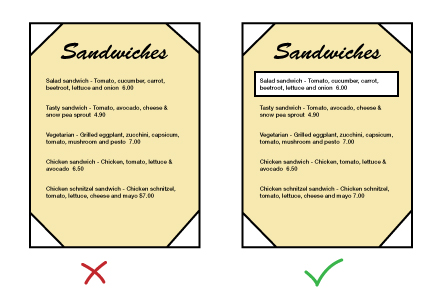
Source: Menu Cover Depot
Take a look at the image above. One way to increase sales of Stars and Puzzles is by highlighting them on your menu.
The human eye is naturally drawn to elements that stand out, so by using bold fonts, boxes, or images,you can guide your customers’ choices.
As you can see, the layout of your menu contributes to boosting sales. To further illustrate, consider the menu from Butcher and Banker shown next.
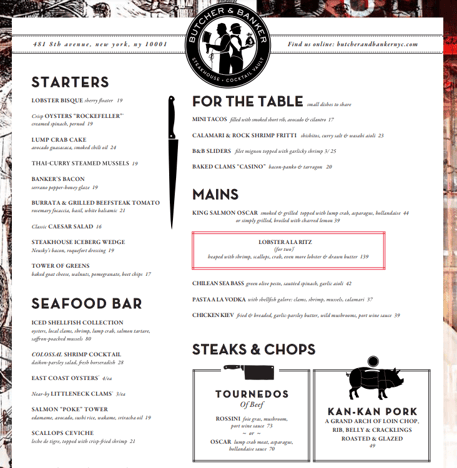
Source: Butcher and Banker
As you can see, they cleverly highlight what is most likely their Star and Puzzle items with a red border or appealing illustrations.
Additionally, they avoid listing item prices in a column down the right side. This beneficial practice stops customers from simply scanning for prices and possibly settling for less profitable items.
Instead, prices are next to the item descriptions, encouraging customers to read about each dish.
You can use this example as inspiration, but make sure to use your own data to adjust your menu design and have it do the work for you.
Have Your Staff Promote Specific Menu Items
While the menu itself is a powerful tool for increasing sales, your staff is the helpful hand that can make or break the dining experience.
Having staff that can actively promote specific menu items is like having a personal guide for your customers.
They can steer guests toward certain dishes, thus increasing sales of high-profit items while ensuring the customers are happy with their choices.
When you give your menu that much-needed revamp, you must also loop in your staff. How? Through a well-organized training program.

Source: Tablein
Now, as the image above suggests, this training should cover the essentials of menu promotion. Firstly, your staff needs to get to know each menu item like the back of their hand.
Being able to answer questions about ingredients, preparation methods, or allergy information instills confidence in customers.
They should also understand the business side of things.
This means knowing which items are highly profitable and which are not, and making suggestions to steer customers towards your Star and Puzzle items.
However, the ultimate goal should be customer satisfaction.
For instance, if your server knows that one of your loyal patrons loves spicy food, they might want to suggest trying a new chili-infused appetizer that is high-profit, but generally unpopular.
Now, with this newfound knowledge, what’s next for your staff?

Illustration: Tablein / Data: Nutritics
Through training, your staff will learn to increase sales by upselling.
For instance, a guest could be contemplating a particular dish, and the staff can subtly steer the guest towards an alternative that is not only in line with the guest's preference but also has a higher profit margin due to lower ingredient costs.
And by knowing the menu inside-out, they will be able to promote the items authentically and confidently without coming off as pushy or overbearing.In conclusion, empowering your staff with menu insights creates a domino effect of benefits, from upselling to efficient, top-notch service, making it a win-win for your customers and your bottom line.
Analyze the Success of Your Redesigned Menu
You've put in the work and revamped your menu, but now comes the moment of truth, where you analyze whether your changes paid off.
Understanding the impact of your new menu is vital, as it helps you identify what works and what doesn’t. This way, you can continuously improve your offerings, service, and, ultimately, your bottom line.
One straightforward way of gauging the success of your menu redesign is an evaluation of its impact on your profit margins.
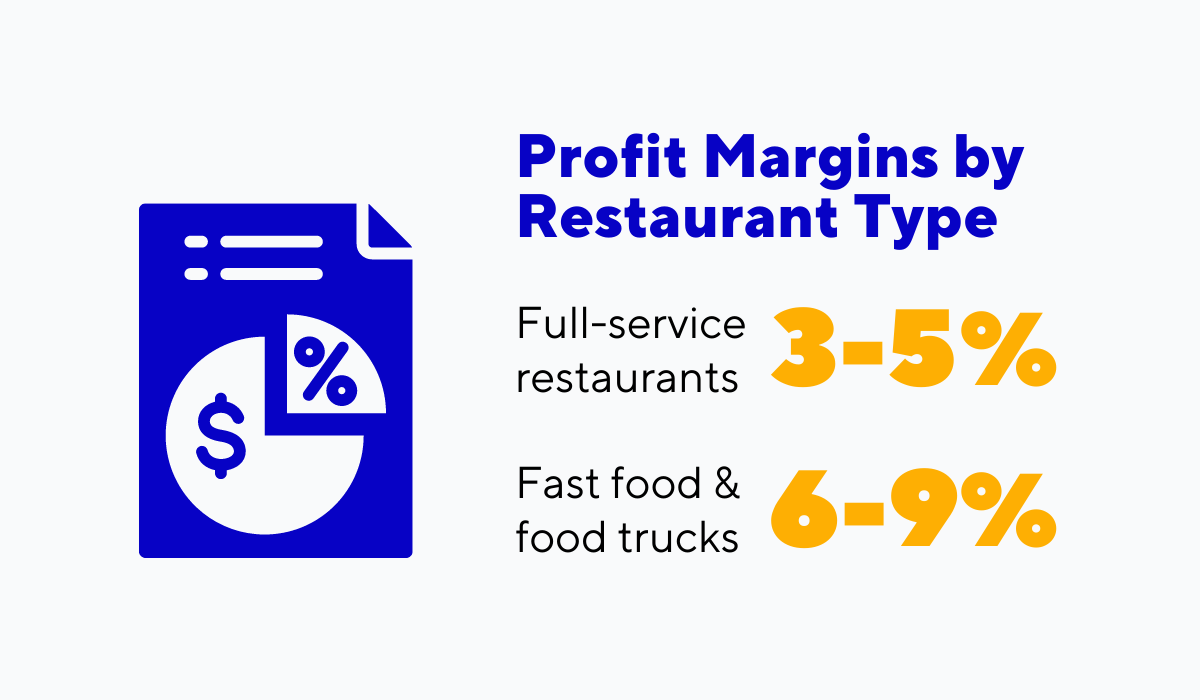
Illustration: Tablein / Data: Bizfluent
Take a look at the image above, showing the average profit margins for different types of restaurants. What you can do is compare your profit margins before and after the menu changes.
Let’s say you’re running a full-service restaurant. Before the menu overhaul, you might see a 3% profit margin.
After the changes, if you see that number increase to 4-5%, then kudos! Your menu redesign was a success. If not, it might be time to revisit the drawing board or explore other ways to boost sales.
But there’s more to it. You also need to evaluate if your redesigned menu achieved its specific goals. Did you want to boost sales of Star and Puzzle items? Did that happen?
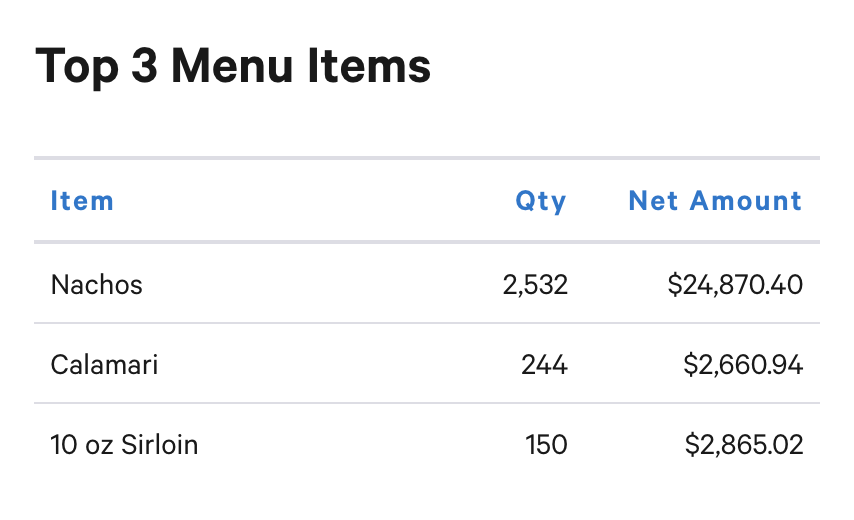
Source: Toast
This is where your POS system will come in handy. With it, you can track the sales of individual items.
The image above shows the top 3 menu items sold by a restaurant. If the nachos, calamari, and sirloin steak were their high-profit items, the chart above is excellent news.
If, however, they were Dogs, what the restaurant did was just turn them into Plow Horses, increasing the popularity of three low-profit items.
So, by keeping a close eye on your profit margins and tracking the sales of specific items, you can assess the success of your menu changes and make data-driven decisions for future improvements.
Conclusion
In this article, we’ve explored practical steps you can take to enhance your restaurant sales through menu engineering.
We delved into how you can gather menu item data and discover unearthed profitability, brought matrixes into the picture, and topped it off with inspiration for a strategic redesign.
Armed with this knowledge, you are now ready to take your restaurant's menu from a simple list to a powerful tool in your restaurant operations.
Utilize these insights to craft a menu that speaks to your customers and can directly increase your business profits.
An effective menu can be a crucial aspect of your sales strategy, so make sure you craft it well.
Get a 30-day Exclusive Trial
As a Tablein blog reader, you’re eligible for an exclusive 30-day free trial to experience our simple reservation solution for your restaurant.
Enter your business email, and we’ll send you all the steps needed to create your account.
Share this
You may also like
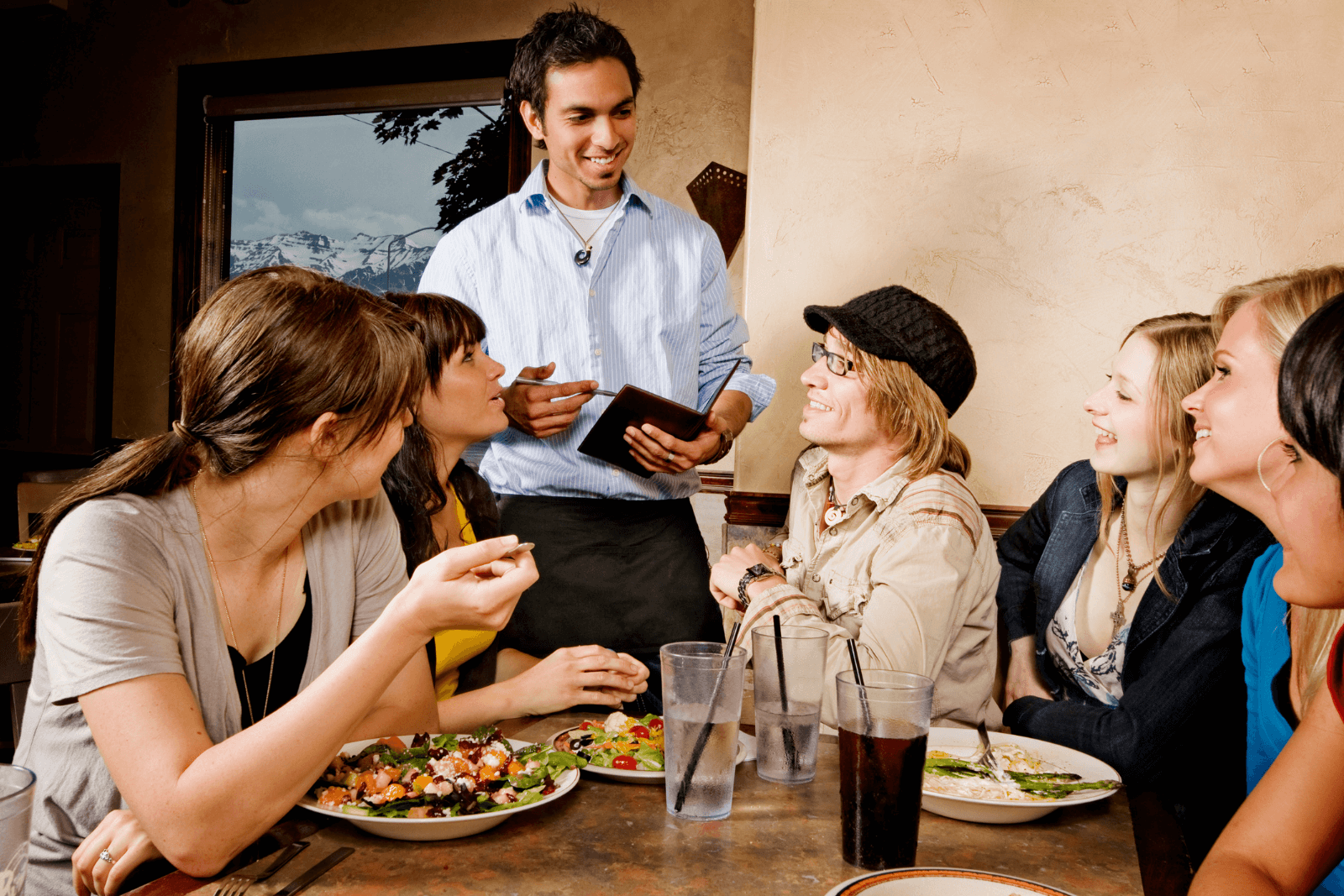
5 Effective Restaurant Revenue Management Strategies
7 Essential Elements Your Restaurant Website Needs to Have
